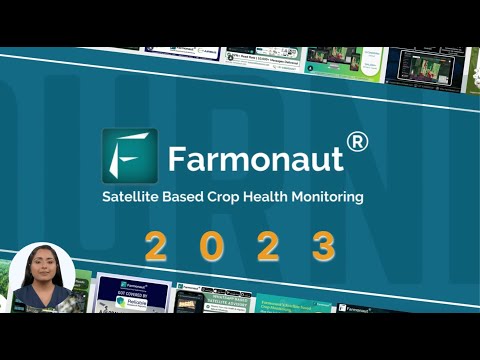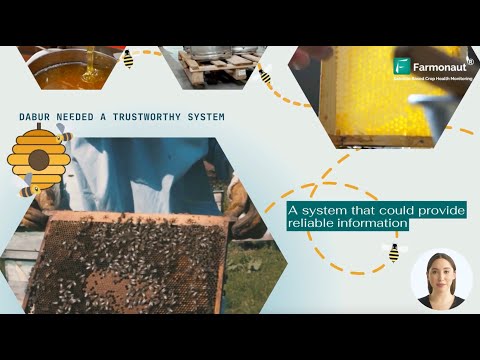USDA Unveils Bold Efficiency Reforms: Optimizing Agriculture for Rural Communities and Taxpayers
“USDA’s efficiency reforms aim to relocate personnel to rural areas, potentially impacting thousands of employees and hundreds of communities.”
In a groundbreaking move that promises to reshape the landscape of American agriculture, the U.S. Department of Agriculture (USDA) has unveiled a series of bold efficiency reforms aimed at optimizing its operations and better serving farmers, ranchers, and rural communities across the nation. As we delve into the details of these sweeping changes, we’ll explore how these reforms are set to transform the USDA’s approach to agricultural policy, departmental effectiveness, and the responsible use of taxpayer funds.
The Dawn of a New Era in Agricultural Governance
On February 14, 2025, U.S. Secretary of Agriculture Brooke Rollins addressed a gathering of over 400 USDA staffers, stakeholders, and friends, pledging to usher in a new era of efficiency and transparency within the department. This landmark announcement marks a significant shift in how the USDA operates, with a renewed focus on serving the agricultural community more effectively while ensuring optimal use of resources.
Secretary Rollins stated, “I welcome DOGE’s efforts at USDA because we know that its work makes us better, stronger, faster, and more efficient. I will expect full access and transparency to DOGE in the days and weeks to come.” This commitment to collaboration with the Department of Government Efficiency (DOGE) underscores the USDA’s dedication to comprehensive reform and optimization.

Key Areas of Reform
The USDA’s efficiency reforms encompass several critical areas, each designed to streamline operations and enhance the department’s ability to serve its constituents. Let’s examine these key areas in detail:
1. Contract Management and Review
One of the most significant aspects of the USDA’s efficiency reforms is the comprehensive review and optimization of contracts. This process has already yielded impressive results:
- Termination of 78 contracts, totaling over $132 million in savings
- More than 1,000 additional contracts currently under review for potential termination
- Discontinuation of proposed procurements that were deemed unnecessary or inefficient
This rigorous approach to contract management demonstrates the USDA’s commitment to eliminating wasteful spending and ensuring that every dollar is used effectively to serve the agricultural community.
2. Employee Training and DEI Programs
In a bold move towards prioritizing unity, equality, and meritocracy, Secretary Rollins has taken decisive action regarding employee training programs:
- Official rescission of all Diversity, Equity, Inclusion, and Accessibility (DEIA) programs
- Cancellation of 948 employee trainings, with 758 focused solely on DEI
- Elimination of trainings related to Environmental Justice and gender ideology
This shift in focus aims to create a more unified and merit-based work environment within the USDA, aligning with the values of millions of American taxpayers.
3. Workforce Optimization
The USDA is implementing an aggressive plan to optimize its workforce, with several key initiatives:
- Elimination of positions that are no longer necessary
- Bringing the workforce back to the office to enhance collaboration and efficiency
- Relocation of employees from the National Capital region to rural areas, supporting community development
These workforce optimization efforts are designed to create a more efficient and responsive USDA, better positioned to serve the needs of farmers, ranchers, and rural communities.
The Impact on Rural Communities and Taxpayers
These efficiency reforms are expected to have a profound impact on rural communities and taxpayers across the United States. By optimizing operations and relocating personnel to rural areas, the USDA aims to:
- Boost rural economic development
- Enhance the department’s understanding of local agricultural needs
- Improve the delivery of services to farmers and ranchers
- Ensure more efficient use of taxpayer funds
The relocation of USDA personnel to rural areas is particularly significant, as it has the potential to create new job opportunities and stimulate economic growth in these communities. This move aligns with the department’s commitment to rural development and underscores the importance of having USDA staff embedded in the communities they serve.
“The USDA’s comprehensive overhaul involves reviewing and potentially terminating hundreds of contracts to optimize agricultural operations and save millions in taxpayer funds.”
Transparency and Accountability
A key aspect of the USDA’s efficiency reforms is the emphasis on transparency and accountability. Secretary Rollins has pledged to provide full access and transparency to the Department of Government Efficiency (DOGE) throughout the reform process. This commitment to openness ensures that:
- Taxpayers can track how their money is being spent
- Stakeholders in the agricultural community can provide input on reforms
- The public can hold the USDA accountable for its actions and decisions
This focus on transparency is crucial in building trust between the USDA, the agricultural community, and the American public.

The Role of Technology in USDA’s Efficiency Reforms
As the USDA undergoes these significant changes, the role of technology in supporting and enhancing these reforms cannot be overstated. Advanced agricultural technologies, such as those offered by companies like Farmonaut, play a crucial role in modernizing and optimizing agricultural operations.
Farmonaut’s satellite-based farm management solutions, for instance, provide valuable tools that align with the USDA’s goals of efficiency and innovation in agriculture. These technologies offer:
- Real-time crop health monitoring
- AI-based advisory systems
- Blockchain-based traceability
- Resource management tools
By leveraging such technologies, the USDA can enhance its ability to support farmers and ranchers with data-driven insights and efficient resource management strategies.
Comparative Analysis: USDA Efficiency Reforms
| Reform Area | Pre-Reform Status | Post-Reform Status |
|---|---|---|
| Workforce Optimization | Concentrated in urban areas | Increased rural presence, optimized staffing |
| Contract Management | Limited review process | Comprehensive review, $132M+ in terminated contracts |
| Budget Allocation | Potential inefficiencies | Streamlined, focused on core agricultural needs |
| Employee Training | Emphasis on DEI programs | Focus on merit-based, agriculturally relevant training |
| Rural Development Focus | Limited rural presence | Increased personnel relocation to rural areas |
| Operational Transparency | Standard governmental reporting | Enhanced transparency, collaboration with DOGE |
The Future of American Agriculture
As we look to the future, it’s clear that these USDA efficiency reforms will have far-reaching implications for American agriculture. By optimizing operations, streamlining processes, and leveraging cutting-edge technologies, the USDA is positioning itself to better serve farmers, ranchers, and rural communities in an ever-changing agricultural landscape.
Some key areas where we can expect to see significant impact include:
- Enhanced support for sustainable farming practices
- Improved access to agricultural resources and information
- More efficient distribution of agricultural subsidies and support
- Increased focus on rural economic development
- Greater integration of technology in agricultural policy and decision-making
As these reforms take shape, it’s crucial for stakeholders in the agricultural community to stay informed and engaged with the process. Farmers, ranchers, and rural residents should actively participate in discussions and provide feedback to ensure that the USDA’s new direction aligns with their needs and concerns.
The Role of Technology Partners in Agricultural Advancement
As the USDA undergoes this transformation, the importance of technology partners in advancing agricultural practices cannot be overstated. Companies like Farmonaut, with their innovative agricultural solutions, play a crucial role in supporting the USDA’s mission to optimize and modernize American agriculture.
Farmonaut’s suite of tools, including satellite-based crop monitoring, AI-driven advisory systems, and blockchain-based traceability solutions, align perfectly with the USDA’s goals of efficiency and innovation. These technologies can help farmers and ranchers:
- Make data-driven decisions to improve crop yields
- Optimize resource usage, reducing waste and environmental impact
- Enhance supply chain transparency and traceability
- Access real-time insights for better farm management
By integrating such advanced technologies into their operations, farmers and ranchers can better align with the USDA’s new direction and contribute to a more efficient and sustainable agricultural sector.
Interested in leveraging cutting-edge agricultural technology? Explore Farmonaut’s solutions:
For developers and businesses looking to integrate agricultural data into their systems, Farmonaut offers robust API solutions. Explore Farmonaut’s API and API Developer Docs for more information.
Challenges and Opportunities
While the USDA’s efficiency reforms promise significant benefits, they also present challenges that must be addressed:
- Ensuring smooth transitions for relocated employees
- Maintaining service quality during the reform process
- Balancing cost-cutting measures with the need for robust agricultural support
- Addressing potential resistance to change within the department
However, these challenges also present opportunities for innovation and improvement. By tackling these issues head-on, the USDA can emerge as a more agile, responsive, and effective organization.
The Path Forward: Continuous Improvement and Adaptation
As Secretary Rollins emphasized, these initial reforms are just the beginning. The USDA is committed to ongoing review and optimization of its operations, ensuring that the department remains at the forefront of agricultural innovation and efficiency. This commitment to continuous improvement will be crucial in addressing the evolving needs of American agriculture and rural communities.
Key areas of focus for future reforms may include:
- Further integration of advanced technologies in agricultural policy and decision-making
- Enhanced collaboration with private sector partners and research institutions
- Development of more targeted and effective agricultural support programs
- Continued efforts to streamline bureaucratic processes and reduce administrative burdens on farmers and ranchers
By staying adaptable and responsive to the needs of the agricultural community, the USDA can ensure that its reforms have a lasting positive impact on American agriculture.
Conclusion: A New Chapter in American Agriculture
The USDA’s bold efficiency reforms mark the beginning of a new chapter in American agriculture. By optimizing operations, streamlining processes, and embracing innovation, the department is positioning itself to better serve farmers, ranchers, and rural communities in the 21st century.
As these reforms take shape, it’s crucial for all stakeholders in the agricultural community to stay informed and engaged. The success of these initiatives will depend on the collaborative efforts of the USDA, farmers, ranchers, technology partners, and rural communities working together towards a more efficient, sustainable, and prosperous agricultural future.
We encourage our readers to stay tuned for further updates on the USDA’s efficiency reforms and to explore how these changes may impact their own agricultural operations or rural communities. Together, we can build a stronger, more resilient agricultural sector that continues to feed the nation and the world.
FAQs About USDA Efficiency Reforms
- Q: How will these reforms affect small farmers?
A: Small farmers are expected to benefit from more streamlined processes, improved access to resources, and potentially increased support for rural communities. - Q: Will the relocation of USDA personnel affect service delivery?
A: While there may be short-term adjustments, the goal is to enhance service delivery by bringing USDA personnel closer to the communities they serve. - Q: How can farmers and ranchers provide input on these reforms?
A: The USDA is committed to transparency and is likely to establish channels for stakeholder feedback. Stay tuned to official USDA communications for opportunities to provide input. - Q: What role will technology play in these reforms?
A: Technology is expected to play a significant role in optimizing USDA operations and improving service delivery to farmers and ranchers. - Q: How long will it take for these reforms to be fully implemented?
A: While some changes are already underway, the full implementation of these reforms is likely to be an ongoing process over the coming months and years.
Earn With Farmonaut: Affiliate Program
Earn 20% recurring commission with Farmonaut’s affiliate program by sharing your promo code and helping farmers save 10%. Onboard 10 Elite farmers monthly to earn a minimum of $148,000 annually—start now and grow your income!







